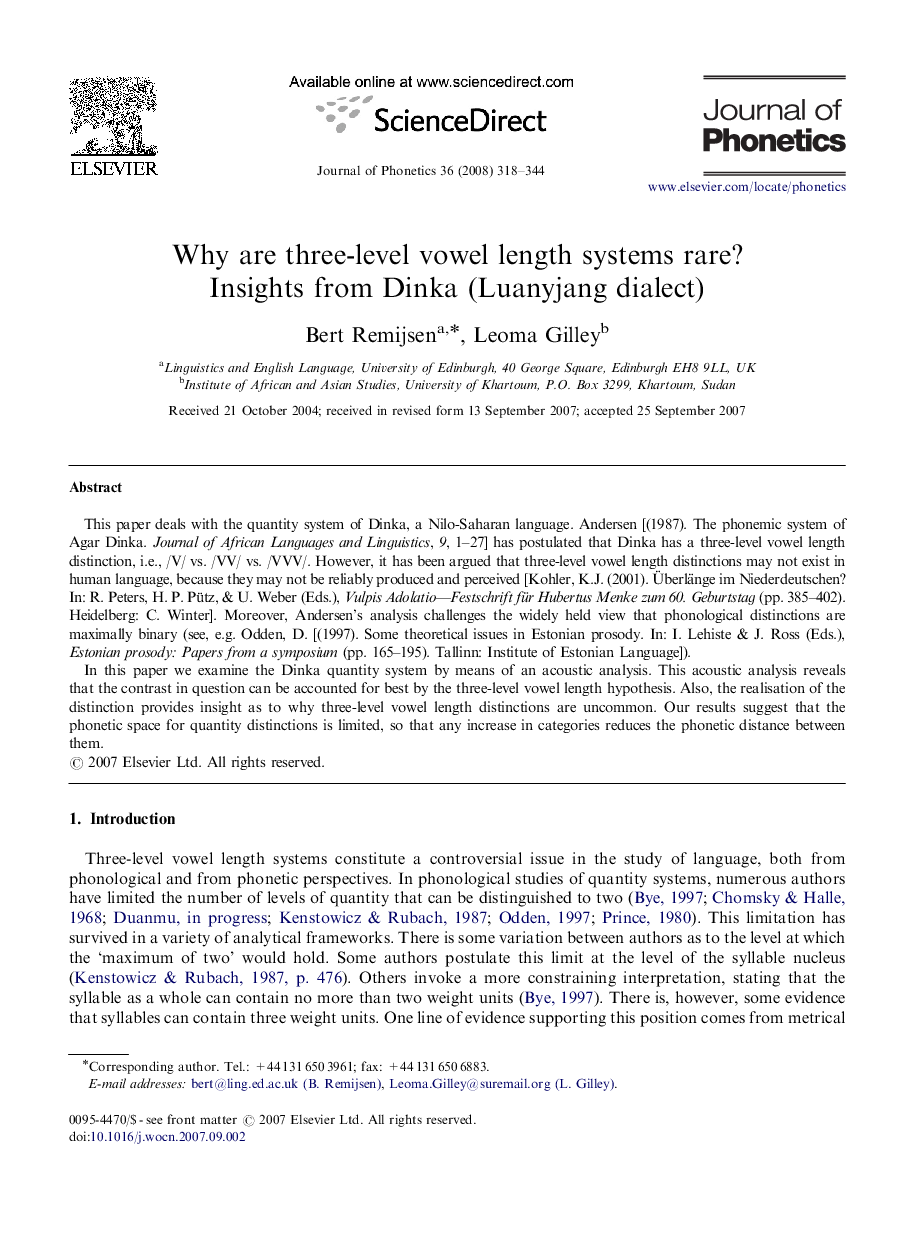| Article ID | Journal | Published Year | Pages | File Type |
|---|---|---|---|---|
| 1101013 | Journal of Phonetics | 2008 | 27 Pages |
This paper deals with the quantity system of Dinka, a Nilo-Saharan language. Andersen [(1987). The phonemic system of Agar Dinka. Journal of African Languages and Linguistics, 9, 1–27] has postulated that Dinka has a three-level vowel length distinction, i.e., /V/ vs. /VV/ vs. /VVV/. However, it has been argued that three-level vowel length distinctions may not exist in human language, because they may not be reliably produced and perceived [Kohler, K.J. (2001). Überlänge im Niederdeutschen? In: R. Peters, H. P. Pütz, & U. Weber (Eds.), Vulpis Adolatio—Festschrift für Hubertus Menke zum 60. Geburtstag (pp. 385–402). Heidelberg: C. Winter]. Moreover, Andersen's analysis challenges the widely held view that phonological distinctions are maximally binary (see, e.g. Odden, D. [(1997). Some theoretical issues in Estonian prosody. In: I. Lehiste & J. Ross (Eds.), Estonian prosody: Papers from a symposium (pp. 165–195). Tallinn: Institute of Estonian Language]).In this paper we examine the Dinka quantity system by means of an acoustic analysis. This acoustic analysis reveals that the contrast in question can be accounted for best by the three-level vowel length hypothesis. Also, the realisation of the distinction provides insight as to why three-level vowel length distinctions are uncommon. Our results suggest that the phonetic space for quantity distinctions is limited, so that any increase in categories reduces the phonetic distance between them.
